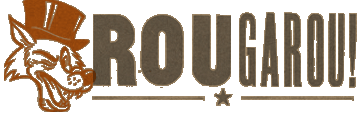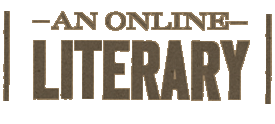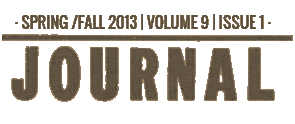· SPRING /FALL 2013 | VOLUME 9 | ISSUE 1 ·
Rougarou, an online literary journal.
Just Like a Northern Rough-Winged Swallow
Amanda Jo Diana
Directly after his birth his mother went into immediate surgery, the doctors repairing a long tear down her uterus and vagina.
What should we do with him? the nurses questioned themselves, staring down at the newborn.
Can we cut it off? one of them asked.
When none of the others replied, she drew a small pair of silver sewing scissors from her purse, laying them on top of it. But she couldn’t do it; two years of nursing school was inadequate preparation.
What did the doctor say? another whispered. In truth, the doctor hadn’t said much of much but retreated to a beer at the nearest bar, condemning himself for not performing a C-section the instant he noticed something askew.
In the end, the nurses left things the way they were. They were not to blame, they could not be sued, if the boy had a beak for a nose and mouth.
* * *
By the age of three, the doctors said the boy would never talk. Though he did, indeed, have vocal cords, his beak could not move as a mouth did. He could not purse his beak to make the ooo sound, could not bite his lower beak to make the ff, and certainly could not expand the sides of his beak across his cheeks to make emmmm.
inded his mother of a car alarm, and she would tap the silence button on her remote starter, just to be sure.
* * *
His mother learned he would only take his food from a large mixing bowl. Though a fork and knife was at his place setting, he left them untouched, burrowing into the large bowl with only his beak, snapping at peas and sucking up spaghetti noodles. While she hid her disgust, he threw his head back, coughing down the long noodles and throwing pasta sauce, in small red splatters, across the kitchen wall. She, at last, lost the last of the pregnancy weight.
* * *
The boy was educated at home due to an incident on his first day of kindergarten, his mother taking on a second job to pay for a private tutor. While some of the children thought having a beak was a fantastic change from the monotony of a mouth, others cornered him on the way to the bus at the end of the day, sticking their hands beneath their armpits and scrunching their noses up into their eyes, making awful ca-caw noises at him. They pulled at his beak, twisting it to the sides, their stubby, meaty fingers laying over his delicate cream-gray hues.
Taking his backpack, they tore it apart, crumbling the fancy alphabet sheet his teacher had given him and laughing at the large mixing bowl with his lunch leftovers Saran-wrapped inside. They unwrapped it, threw the bits of peanut butter and jelly at him, and then, when the food was gone, rocks.
The boy’s mother found him later that afternoon, bruised and shaking, a thread of blood running down his cheek. The mother said nothing. She did not coo at him, tell him how brave he was, or ask who had done this to him. She just scooped her boy up like a first pancake and carried him home. Later that night, after wiping off his face, throwing away his muddy clothes, and tucking him into bed, she put a Band-Aid over her own small wound, just above her left breast, where his beak had cut into her as she held him.
* * *
Later that fall, his mother was startled to find her son on her laptop, lying on his stomach on the living room floor. He had discovered how to get onto the Internet and was looking at a map of Central America, the screen’s yellows and pinks reflected in her son’s pale face.
The next week, she caught him with her laptop again, this time with a map of Belmopan, Belize.
The third time, he was trying to buy a plane ticket there with her credit card. She hid her laptop on the highest shelf of her closet.
* * *
Devoid of the Internet, the boy found solace at the library, two doors down from their apartment. At first, he was reassured by the children’s literature section, for there he could read tales of other unusual children. But then he discovered Section 598. There were flamingoes, pigeons, finches, eagles, hawks, all crammed on these shelves in large print hardcovers with glossy photographs. Standing on a pile of books from 598 to reach the copier’s glass, he was even able to take a couple of the photos home.
He poured over the volumes eagerly, trying to find himself. On his eighteenth day there, he found the National Geographic Field Guide to the Birds of North America. On page 332, there was:
Northern Rough-Winged Swallow
Stelgidopteryx serripennis L 5” (13 cm) Brown above, whitish below, with gray-brown wash on chin, throat, and upper breast. Lacks Bank Swallow’s distinct breast band; wings are longer, wingbeats deeper and slower. Juvenile has cinnamon wing bars. Range: Nests in single pairs in riverbanks, cliffs, culverts, and under bridges. Migrates singly or in small flocks.
Once he knew what he was, he was able to narrow the search further, and he found himself on the top shelf of the 598 section. Stacking two telephone books, three pizza place pamphlets, and a metal cookie tin from the nice librarian on top of a stool to reach the books, and impatiently wondering when his wings would grow in, he found another helpful excerpt:
The northern rough winged swallow nests in cavities near water. They burrow in the dirt for food and do not form colonies. The female lays four to eight eggs in her nest. During the winter, they migrate to the gulf coast and to South and Central America.
* * *
Squawking when his mother showed him a blue shirt the next morning, he tried to tell her he insisted on wearing his khaki-and-white attire because he was just like a Northern Rough-Winged Swallow. He showed her the picture he had copied from the book at the library. His mother nodded distractedly, pulling a brown shirt over his white undershirt.
That afternoon, he wrote out a message to his tutor explaining that he needed two thousand dollars to migrate for the winter, just like a Northern Rough-Winged Swallow. Again, he showed the picture. The tutor told him that was more than the boy’s mother paid the tutor, so this was not possible.
That evening, when the librarian found him, at closing time, trying to hide under the library’s small wooden bridge in the outside reading garden, the boy burrowed in further, sliding out the picture and hastily writing “just like a Northern Rough-Winged Swallow” on the side of the paper with a broken pencil. The librarian called his mother.
* * *
That night, the boy waited until his mother’s light had gone off at the other end of the hall before crawling out of bed in his pajamas, the only ones his mother could find with little birds on them. He snuck out of the apartment, took the stairs to the top floor of the building, then up the fire escape’s ladder to the roof. At the top, the cool night air twisted around his beak as he walked to a corner of the roof.
Their apartment had many floors, and so the boy felt as though he was looking down at the entire world. The lights twinkled beneath him, street lamps and houses and stores shrunk down to stars, a billion miles away. In the distance, he thought he could see Belmopan.
The darkness was tantalizing, and the boy inched his bare toes up to the very edge, letting them tingle against the cold wind. He looked down past them to the sidewalk below and felt weightless, that even though he was firmly rooted to the roof, he could teeter into the vastness of the sky at any moment. His head twirled in delight at the thought.
Humans lived in a two-dimensional plane, he thought to himself, there was no real “up” for them. Even the top of this apartment was nothing, really; they were the stewards of gravity. The boy, though, knew he was more than just a human, he was meant for the sky and all the possible ups and downs. A human, such as his mother, or tutor, or a school bully, could jump maybe three feet, which, to them, felt like a great deal. The boy, though, knew he could soar across all the skies, up and down in the thousands and thousands of different planes of clouds and stratospheres and heavens. He could be three-dimensional. There was no bottom in the sky, just another layer of wisps.
A flock of birds out on a late-night migration caught the boy’s eye. They swirled around him, chirping come, come. The boy raised his head toward the small birds, his eyes following them as they twirled back up to a different plane, growing smaller as they made their way closer to the heavens.
He wanted to nest and burrow. He wanted to be brown and white. He wanted to migrate. He was not a human. He was a bird. Right before he pushed off from the roof, arms outstretched, ready to sail all the way to Belmopan and find a nice stream, and maybe a mate to nest with, he thought to himself: I’m just like a Northern Rough-Winged Swallow.







